α-Tomatine-mediated anti-cancer activity in vitro and in vivo through cell cycle- and caspase-independent pathways
- PMID: 22970166
- PMCID: PMC3435411
- DOI: 10.1371/journal.pone.0044093
α-Tomatine-mediated anti-cancer activity in vitro and in vivo through cell cycle- and caspase-independent pathways
Abstract
α-Tomatine, a tomato glycoalkaloid, has been reported to possess antibiotic properties against human pathogens. However, the mechanism of its action against leukemia remains unclear. In this study, the therapeutic potential of α-tomatine against leukemic cells was evaluated in vitro and in vivo. Cell viability experiments showed that α-tomatine had significant cytotoxic effects on the human leukemia cancer cell lines HL60 and K562, and the cells were found to be in the Annexin V-positive/propidium iodide-negative phase of cell death. In addition, α-tomatine induced both HL60 and K562 cell apoptosis in a cell cycle- and caspase-independent manner. α-Tomatine exposure led to a loss of the mitochrondrial membrane potential, and this finding was consistent with that observed on activation of the Bak and Mcl-1 short form (Mcl-1s) proteins. Exposure to α-tomatine also triggered the release of the apoptosis-inducing factor (AIF) from the mitochondria into the nucleus and down-regulated survivin expression. Furthermore, α-tomatine significantly inhibited HL60 xenograft tumor growth without causing loss of body weight in severe combined immunodeficiency (SCID) mice. Immunohistochemical test showed that the reduced tumor growth in the α-tomatine-treated mice was a result of increased apoptosis, which was associated with increased translocation of AIF in the nucleus and decreased survivin expression ex vivo. These results suggest that α-tomatine may be a candidate for leukemia treatment.
Conflict of interest statement
Figures
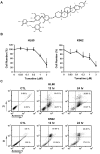
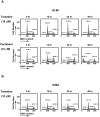
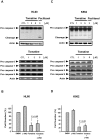
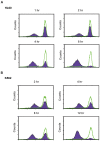
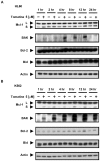

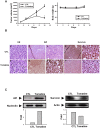
Similar articles
-
Alpha-tomatine induces apoptosis and inhibits nuclear factor-kappa B activation on human prostatic adenocarcinoma PC-3 cells.PLoS One. 2011 Apr 26;6(4):e18915. doi: 10.1371/journal.pone.0018915. PLoS One. 2011. PMID: 21541327 Free PMC article.
-
The Tomato Glycoalkaloid α-Tomatine Induces Caspase-Independent Cell Death in Mouse Colon Cancer CT-26 Cells and Transplanted Tumors in Mice.J Agric Food Chem. 2015 Feb 4;63(4):1142-1150. doi: 10.1021/jf5040288. Epub 2015 Jan 23. J Agric Food Chem. 2015. PMID: 25614934
-
A novel cyano derivative of 11-keto-β-boswellic acid causes apoptotic death by disrupting PI3K/AKT/Hsp-90 cascade, mitochondrial integrity, and other cell survival signaling events in HL-60 cells.Mol Carcinog. 2012 Sep;51(9):679-95. doi: 10.1002/mc.20821. Epub 2011 Jul 12. Mol Carcinog. 2012. PMID: 21751262
-
Therapeutic potential of AIF-mediated caspase-independent programmed cell death.Drug Resist Updat. 2007 Dec;10(6):235-55. doi: 10.1016/j.drup.2007.11.001. Epub 2008 Jan 3. Drug Resist Updat. 2007. PMID: 18180198 Review.
-
The steroidal alkaloids α-tomatine and tomatidine: Panorama of their mode of action and pharmacological properties.Steroids. 2021 Dec;176:108933. doi: 10.1016/j.steroids.2021.108933. Epub 2021 Oct 23. Steroids. 2021. PMID: 34695457 Review.
Cited by
-
Tomatine Displays Antitumor Potential in In Vitro Models of Metastatic Melanoma.Int J Mol Sci. 2020 Jul 23;21(15):5243. doi: 10.3390/ijms21155243. Int J Mol Sci. 2020. PMID: 32718103 Free PMC article.
-
In Vivo and in vitro antitumor activity of tomatine in hepatocellular carcinoma.Front Pharmacol. 2022 Sep 9;13:1003264. doi: 10.3389/fphar.2022.1003264. eCollection 2022. Front Pharmacol. 2022. PMID: 36160442 Free PMC article.
-
Bitter and sweet make tomato hard to (b)eat.New Phytol. 2021 Apr;230(1):90-100. doi: 10.1111/nph.17104. Epub 2020 Dec 13. New Phytol. 2021. PMID: 33220068 Free PMC article.
-
Anti-Cancer Effects of Glaucarubinone in the Hepatocellular Carcinoma Cell Line Huh7 via Regulation of the Epithelial-To-Mesenchymal Transition-Associated Transcription Factor Twist1.Int J Mol Sci. 2021 Feb 8;22(4):1700. doi: 10.3390/ijms22041700. Int J Mol Sci. 2021. PMID: 33567682 Free PMC article.
-
Agri-Food Waste Recycling for Healthy Remedies: Biomedical Potential of Nutraceuticals from Unripe Tomatoes (Solanum lycopersicum L.).Foods. 2024 Jan 20;13(2):331. doi: 10.3390/foods13020331. Foods. 2024. PMID: 38275698 Free PMC article. Review.
References
-
- Fontaine TD, Irving GW Jr, et al. (1948) Isolation and partial characterization of crystalline tomatine, an antibiotic agent from the tomato plant. Arch Biochem 18: 467–475. - PubMed
-
- Friedman M (2002) Tomato glycoalkaloids: role in the plant and in the diet. J Agric Food Chem 50: 5751–5780. - PubMed
-
- Sandrock RW, Vanetten HD (1998) Fungal Sensitivity to and Enzymatic Degradation of the Phytoanticipin alpha-Tomatine. Phytopathology 88: 137–143. - PubMed
-
- Yang YW, Sheikh NA, Morrow WJ (2002) The ultrastructure of tomatine adjuvant. Biomaterials 23: 4677–4686. - PubMed
-
- Lee KR, Kozukue N, Han JS, Park JH, Chang EY, et al. (2004) Glycoalkaloids and metabolites inhibit the growth of human colon (HT29) and liver (HepG2) cancer cells. J Agric Food Chem 52: 2832–2839. - PubMed
Publication types
MeSH terms
Substances
LinkOut - more resources
Full Text Sources

